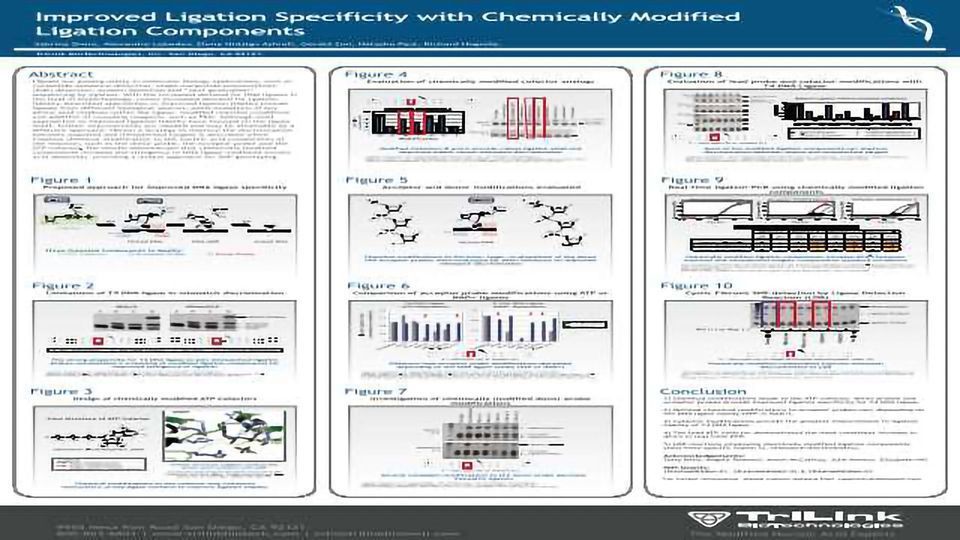Improved Ligation Specificity with Chemically Modified Ligation Components

Abstract
Ligases are gaining utility in molecular biology applications, such as nucleotide sequence detection, single nucleotide polymorphism (SNP) detection, protein detection and “next generation” sequencing by ligation. With the increased demand for DNA ligases in the field of biotechnology, comes increased demand for ligation fidelity. Described approaches to improved ligation fidelity include ligases from different biological sources, point mutations of key amino acid residues within the ligase, modified reaction conditions and addition of crowding reagents, such as PEG. Although most approaches to improved ligation fidelity have focused on the ligase itself, further improvements are needed and may be attainable by a different approach. Herein a strategy to improve the discrimination between matched and mismatched targets is described which employs chemical modification to the nucleic acid components of the reaction, such as the donor probe, the acceptor probe and the ATP cofactor. The results demonstrate that chemically modified components increase the stringency of DNA ligase-mediated nucleic acid detection, providing a unique approach for SNP genotyping.




